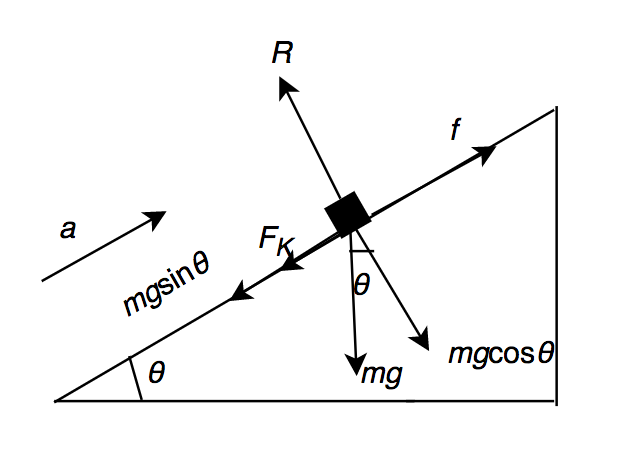5. A 3.00 kg mass is initially at rest at the bottom of an incline of 35.0°. An applied force begins acting on the mass, pushing it up the incline with a constant force of 25.0 N, directed parallel to the incline. a) If the acceleration produced is 2.50 m/s? up the incline, what must the coefficient of kinetic friction be?
5. A 3.00 kg mass is initially at rest at the bottom of an incline of 35.0°. An applied force begins acting on the mass, pushing it up the incline with a constant force of 25.0 N, directed parallel to the incline. a) If the acceleration produced is 2.50 m/s? up the incline, what must the coefficient of kinetic friction be?
College Physics
11th Edition
ISBN:9781305952300
Author:Raymond A. Serway, Chris Vuille
Publisher:Raymond A. Serway, Chris Vuille
Chapter1: Units, Trigonometry. And Vectors
Section: Chapter Questions
Problem 1CQ: Estimate the order of magnitude of the length, in meters, of each of the following; (a) a mouse, (b)...
Related questions
Topic Video
Question

Transcribed Image Text:5. A 3.00 kg mass is initially at rest at the bottom of an incline of 35.0°. An applied force begins
acting on the mass, pushing it up the incline with a constant force of 25.0 N, directed parallel to
the incline.
a) If the acceleration produced is 2.50 m/s? up the incline, what must the coefficient of kinetic
friction be?
b) If the applied force acts for 2.00 s, how far up the incline will the mass travel upon coming to
rest? Measure this from where the applied force starts acting to where the mass comes to a stop.
Expert Solution
Step 1
The free body diagram of the mass is given below.

(a)
Express the relation for the frictional force between the incline and the mass.
Here, Fk is the frictional force, R is the normal reaction, μk is the coefficient of kinetic friction, m is the mass, g is the acceleration due to gravity and θ
Step by step
Solved in 3 steps with 1 images

Knowledge Booster
Learn more about
Need a deep-dive on the concept behind this application? Look no further. Learn more about this topic, physics and related others by exploring similar questions and additional content below.Recommended textbooks for you

College Physics
Physics
ISBN:
9781305952300
Author:
Raymond A. Serway, Chris Vuille
Publisher:
Cengage Learning

University Physics (14th Edition)
Physics
ISBN:
9780133969290
Author:
Hugh D. Young, Roger A. Freedman
Publisher:
PEARSON

Introduction To Quantum Mechanics
Physics
ISBN:
9781107189638
Author:
Griffiths, David J., Schroeter, Darrell F.
Publisher:
Cambridge University Press

College Physics
Physics
ISBN:
9781305952300
Author:
Raymond A. Serway, Chris Vuille
Publisher:
Cengage Learning

University Physics (14th Edition)
Physics
ISBN:
9780133969290
Author:
Hugh D. Young, Roger A. Freedman
Publisher:
PEARSON

Introduction To Quantum Mechanics
Physics
ISBN:
9781107189638
Author:
Griffiths, David J., Schroeter, Darrell F.
Publisher:
Cambridge University Press

Physics for Scientists and Engineers
Physics
ISBN:
9781337553278
Author:
Raymond A. Serway, John W. Jewett
Publisher:
Cengage Learning

Lecture- Tutorials for Introductory Astronomy
Physics
ISBN:
9780321820464
Author:
Edward E. Prather, Tim P. Slater, Jeff P. Adams, Gina Brissenden
Publisher:
Addison-Wesley

College Physics: A Strategic Approach (4th Editio…
Physics
ISBN:
9780134609034
Author:
Randall D. Knight (Professor Emeritus), Brian Jones, Stuart Field
Publisher:
PEARSON